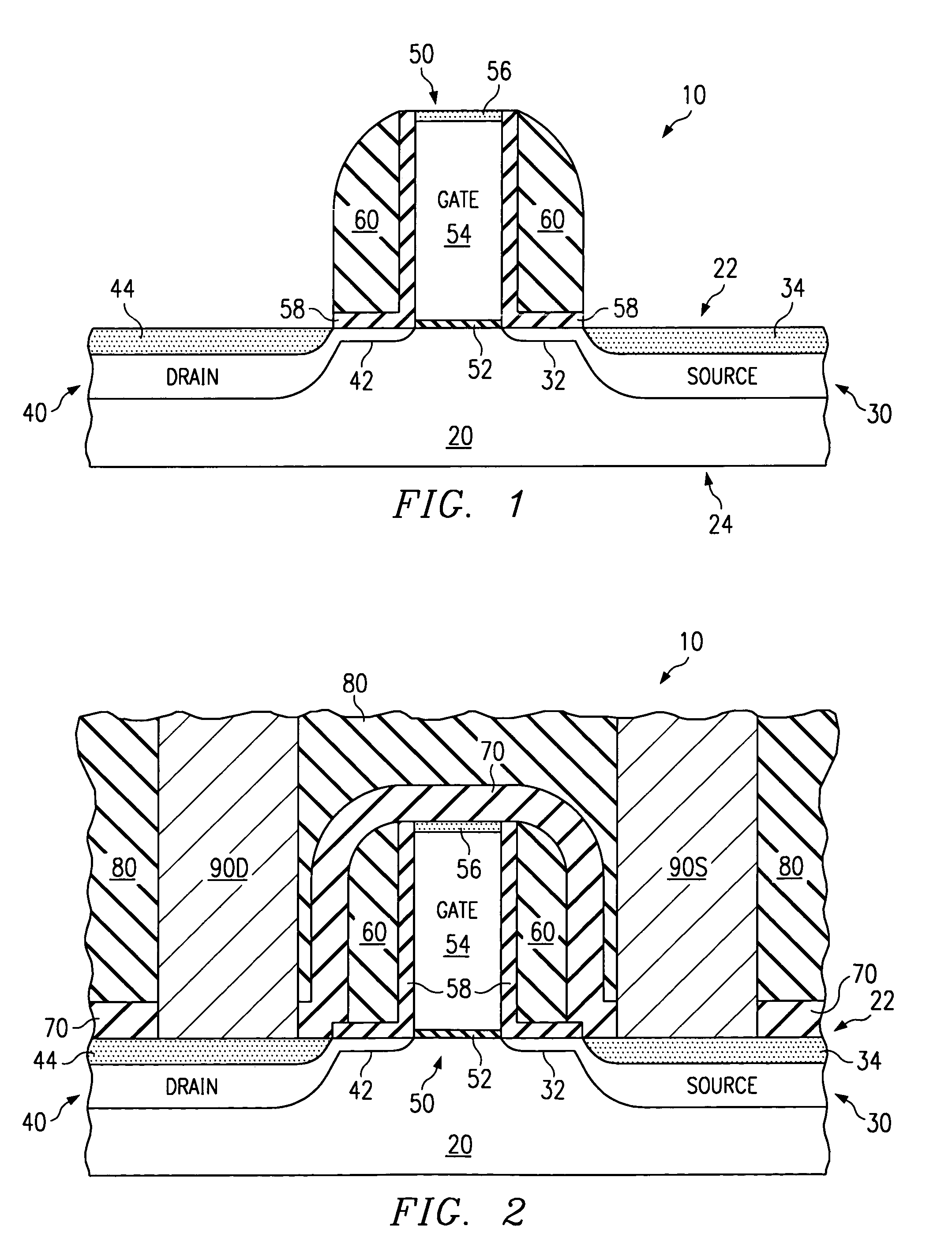Method for manufacturing and structure for transistors with reduced gate to contact spacing
- Summary
- Abstract
- Description
- Claims
- Application Information
AI Technical Summary
Benefits of technology
Problems solved by technology
Method used
Image
Examples
Embodiment Construction
[0015]FIG. 1 illustrates a transistor assembly 10 at one stage of a manufacturing process in accordance with the present invention. In general, transistor assembly 10 includes a semiconductor layer 20, a source region 30 formed in semiconductor layer 20, a drain region 40 formed in semiconductor layer 20, a gate structure 50, and a spacer layer 60.
[0016]Semiconductor layer 20 may be a substrate, such as, for example, a wafer, and may be composed of any appropriate type of semiconductive material. In the illustrated embodiment, semiconductor layer 20 is composed of single crystalline silicon and has a first surface 22 and a second surface 24. Semiconductor layer 20 may also be a layer of semiconductive material formed on a substrate. For example, semiconductor layer 20 may be an epitaxial layer grown on a wafer. Semiconductor layer 20 forms a base for the other components of transistor assembly 10 and also serves as a semiconductive material.
[0017]Semiconductor layer 20 includes a so...
PUM
 Login to View More
Login to View More Abstract
Description
Claims
Application Information
 Login to View More
Login to View More - R&D
- Intellectual Property
- Life Sciences
- Materials
- Tech Scout
- Unparalleled Data Quality
- Higher Quality Content
- 60% Fewer Hallucinations
Browse by: Latest US Patents, China's latest patents, Technical Efficacy Thesaurus, Application Domain, Technology Topic, Popular Technical Reports.
© 2025 PatSnap. All rights reserved.Legal|Privacy policy|Modern Slavery Act Transparency Statement|Sitemap|About US| Contact US: help@patsnap.com



